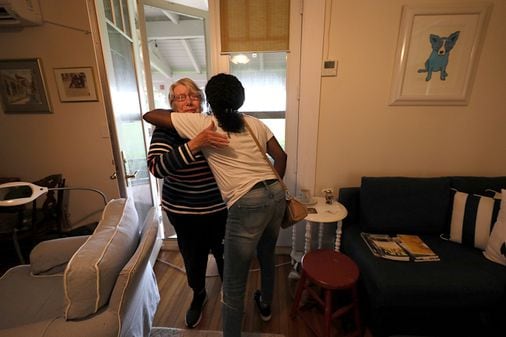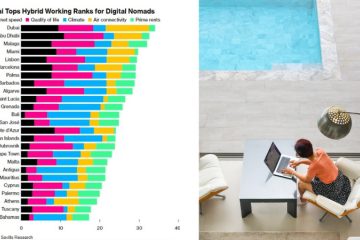Antonino is among the Massachusetts residents feeling the impact of a health care workforce crisis that has touched virtually every sector of the industry.
Well over half of the hospitals, behavioral health providers, nursing homes, and adult day cares who responded to a recent state survey reported an increase in patients waiting for services last year compared to 2022. A lack of staff caused almost two thirds of behavioral health providers and more than half of home care providers to reject clients, according to the survey, conducted by the stateâs Center for Health Information and Analysis.
Shortages are widespread but most acute among lower paying positions, said Lauren Peters, CHIAâs executive director. Home care aides, for example, typically earn about $20-an-hour in Massachusetts. The shortage of people willing to do a difficult job at those wages leaves those who need the most frequent support, such as the elderly and those with disabilities, in a seemingly never-ending scramble for services.
In South Boston, Jim Wice, 63, who uses a wheelchair, was so desperate for assistance he once paid for a former aide to fly to Boston from Washington state to help him. He feels trapped in a cycle of hunting for backup care in case his primary caregivers fall through.
âIâm always networking,â he said, âIâm always looking around to see who might be a possible next [personal care attendant].â
Direct care workers, registered nurses, and social worker positions at home health care agencies have vacancy rates ranging from 20 to 25 percent, the survey found. Direct care jobs at nursing homes and adult day cares are similarly understaffed.
â[Workers] can go seek alternative employment with an easier function or easier jobs,â Peters said. âI think itâs really no surprise that these roles are the hardest to fill, are the hardest to retain.â
The survey, which polled providers in health care sectors ranging from hospitals to dentistry from May 2023 to January 2024, also found shockingly high turnover in some jobs. Almost half of all registered nurses working in home health care and adult day care left their jobs within a year.
âThey are being asked to see too many patients, and patients are going home sicker, and with complicated wounds,â said Katie Murphy, president of the Massachusetts Nurses Association and an ICU nurse at Mass General Brigham.
Jobs with the highest vacancies and turnover rates also tend to have the most non-white workers, Peters noted.
CHIA officials intend to run the survey every two yearsto track growth and contractions in the workforce.
âThe impetus for this was really to get an objective fact base around workforce shortages across some of the key sectors in the heath care industry,â Peters said.
The survey also looked at solutions. Many employers said they relied on better pay to boost hiring and retention; others turned to hiring bonuses, flexible hours, and student loan forgiveness.
âCHIAâs findings are further proof that diversity, flexibility, and wellbeing must continue to serve as the anchors of our workforce efforts here in the commonwealth,â Steve Walsh, president and chief executive of the the Massachusetts Health and Hospital Association, said in a statement.
Inadequate labor is particularly of concern if it puts added pressure on clinicians or prevents hospitals from admitting as many patients as they otherwise could, MHA reported. That is happening in some hospitals, said Sam Melnick, a spokesperson for the organization, making worker shortages an urgent concern.
Large hospital systems had the greatest number of vacancies among licensed practical nurses, the CHIA survey found. Unaffiliated hospitals struggled to fill medical technologist jobs.
Hospitals are also indirectly affected by a lack of workers at behavioral health and other specialized care providers who then cannot accept transfers from emergency departments, said Joseph Kopp, an emergency medicine physician with Mass General Brigham. The pileup of patients eligible for other types of care contributes to dangerous overcrowding and long waits at larger hospitals.
The COVID-19 pandemic exacerbated already worrisome health care workforce numbers. In 2021, a national survey found widespread stress, anxiety, and depression among nurses. Ten percent wanted out of their jobs entirely. Murphy, the nursesâ union president, emphasized there isnât a shortage of RNs in Massachusetts. Rather, nurses leave hospitals due to overwhelming workloads, she said. Across all health care sectors, the survey found, 17 percent of registered nursing jobs are unfilled.
In the health and human services sector, which includes behavioral health, day programs, and home care services, the state has committed significant money to addressing the paucity of labor. That includes $46 million to support workforce development at 84 human services organizations and $16.5 million for student loan repayments for direct care workers. The behavioral health industry is desperate for the state to release close to $200 million in federal pandemic relief funds allocated for behavioral health programs, including another hefty loan repayment program.
âThe recent CHIA dashboard confirms that we are focused on the appropriate priorities,â said Cecille Avila, a spokesperson for HHS, in a statement.
The Healey administration also proposed a $640 million commitment to increase human and social services reimbursement rates for the coming fiscal year.
Cape Cod is particularly hard hit by the shortage of lower-paid health care workers, many of whom canât afford to live there. Elder Services of Cape Cod and the Islands reported 369 people in Barnstable, Dukes, and Nantucket counties waiting for any home service or an increase in service, said Kim Nahas, the organizationâs clinical services officer.
âItâs very challenging work, and the pay is not where it needs to be,â she said.
Rita Barse got help with showering from her aide, Millicent Cousins. Suzanne Kreiter/Globe Staff
Rita Barse, 83, of Oak Bluffs on Marthaâs Vineyard, has been waiting since November 2022 for home care covered by Medicare, she said. Barse has had several health setbacks in recent years, including difficult knee replacement surgery and a stroke, but has mostly stayed independent. Showering is difficult, though, she said. She spends $40 an hour out-of-pocket on a private service that provides help two to four hours per week. On days when no one comes, she may not shower at all.
Barseâs daughter, Elaine, often helps, but is frustrated by the lack of options.
âA lot of people think thereâs all these super wealthy people here,â Elaine Barse said. âThereâs also the person whoâs on a fixed income. Youâre paying rent, and youâre doing all this other stuff, and thereâs not a lot left over.â
Antonino, the Sagamore man, has someone assist his wife with toileting four days a week. The other three days, he does his best on his own. It complicates his situation, paradoxically, that he only needs help for about an hour a day. Most home aides wonât accept such limited hours.
Caring for Marie, his wife of nearly 60 years, is exhausting, he said. He tends to fall asleep when he has down time. But he wonât put her in a nursing home. Those are understaffed too, he said, and the providers are overworked.
âIâm doing my best to keep my wife out of there,â he said.
Jason Laughlin can be reached at jason.laughlin@globe.com. Follow him @jasmlaughlin.





